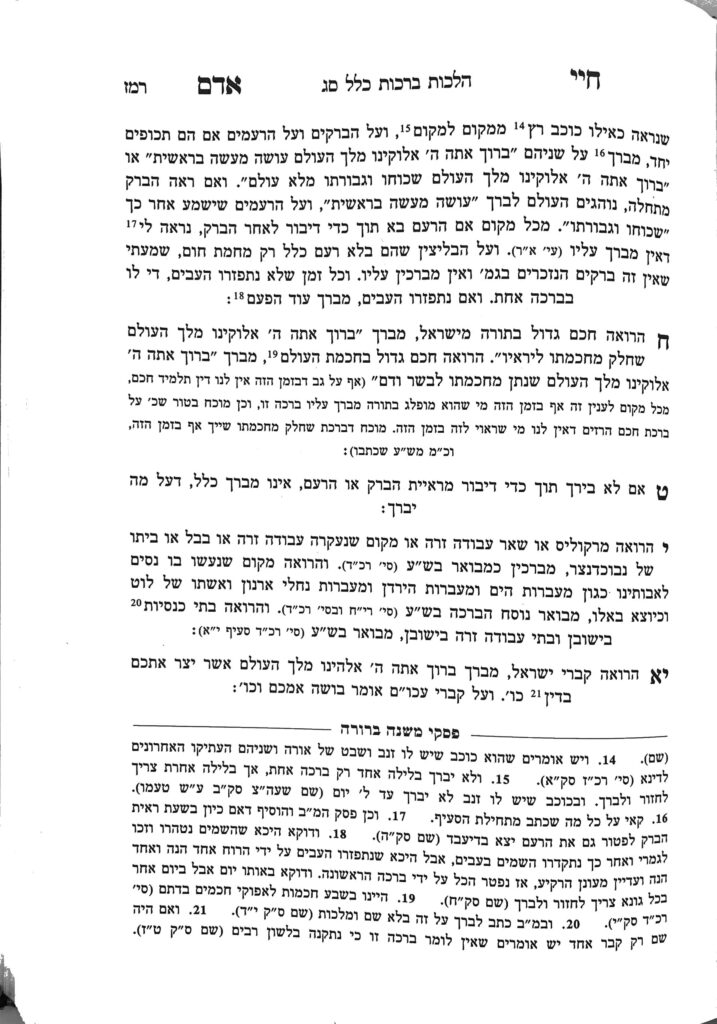We have finished siman 11, which discussed the bracha made upon seeing kevarim of Jewish people. Today, we will discuss the halachos of washing one’s hands after interfacing with a niftar or cemetery.
One who walks between, touches, or accompanies a meis must wash their hands to remove the ruach raah from their hands. The Magen Avraham is of the opinion that washing once is sufficient, but the Elya Rabba quotes other sources that one should wash three times, and this has become the accepted minhag.
The washing should be similar to the washing done before a seudah. It should be done with a kli, it should have koach gavra (water poured on hands by a person, not directly from a faucet), the kli should be a kli shaleim (kli fully intact). However, none of these are meakeiv bedieved. One should wash the whole hand until the wrist.
When washing outside, the minhag is to wash onto the ground and let the water run off.
The washing cup should be picked up with the right hand and passed to the left. A person should not have the water poured on their hands by someone who has not yet washed themselves.
One should wash as soon as possible in order to remove the tumah from their hands.
The minhag is to air dry one’s hands. However, since there are opinions which permit drying them regularly, one can rely on them in the winter to dry regularly.
One should try not to enter a house or building until washing their hands, due to the ruach raah they bring with them. Although there is no clear source, it is the accepted minhag. Interestingly, this minhag is primarily brought down regarding visiting a cemetery, and not for a funeral, but the contemporary minhag is to apply it to both situations.
One only has to wash their hands at a levaya if they were within four amos of the meis, or if they were under the same roof as it. If the levaya is outside, and one remains more than four amos away, they do not need to wash. Although many are makpid to wash regardless, one certainly does not need to be makpid on entering a building before washing in such a case.
Regarding the bracha of asher yotzar eschem badin, the minhag has become to recite the paragraph of atah gibor (from shemoneh esrei) after the bracha, saying from the words atah gibbor until, but not including, baruch atah hashem mechayei hameisim. When bringing down the paragraph, many siddurim skip the insertions of mashiv haruach and morid hatal completely.
Reb Shlomo Zalman Auerbach Zatzal says that one should always recite morid hatal, because it applies to the winter as well, and because it can be understood as a reference to techiyas hameisim, as Chazal describe a tal shel techiyah, dew of resurrection, at the time of techiyas hameisim.
A contemporary sefer suggests that if one does not have the text of asher yotzar eschem badin available to them, they can recite the paragraph of atah gibbor, end off the paragraph with the bracha of mechayei hameisim, and in that manner be yotzei reciting the bracha of asher yotzar eschem badin. The source for this psak is not clear, so one should not rely on it without further clarification.
Summary
Halachos regarding washing hands after interfacing with a meis:
- One only needs to wash if they were within four amos of a meis, or under the same roof;
- One should wash as soon as possible;
- One should wash three times on each hand;
- The washing should be done in the way it is done for a seudah;
- When washing outside, one should wash on the ground and let the water run off;
- One should not have water poured on their hands by someone who has not yet washed themselves;
- Hands should be air dried; one may be lenient in adverse conditions;
- One should try to avoid walking into a building before they wash.
The minhag is to recite the paragraph of atah gibbor (excluding the final bracha) after the bracha of asher yotzar eschem badin. One should insert morid hatal even in the winter.



